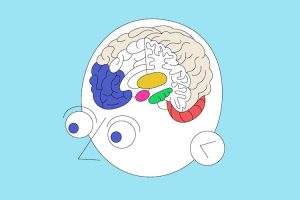Cancer
Oncologist Justin Stebbing on different types of treatment for cancer, gene sequencing and what does it mean t...
The video is a part of the project British Scientists produced in collaboration between Serious Science and the British Council.
I am an experimental psychologist at heart. It is a young subject. It started at the end of 19th century. And cognitive psychology is even later, it started in the middle of 20th century and replaced a behaviourism as the main way of studying people. The ‘cognitive’ in cognitive psychology refers to the fact we are using computers as a metaphor or information processing. So we talk about memory and storage. We talk about perception and templates. And social cognition arrived even later, at around the end of 20th century. And initially, as the name implied, it was about implying the idea of cognitive psychology to social psychology. And in the early days, this meant things like how do we recognize emotions in people’s faces.
The key difference between cognitive psychology and behaviorism was that cognitive psychologists wanted to know what was happening in your mind, not just looking at behaviour. So, they were concerned with what people were thinking, what they we introspecting, and, for example, how they solve problems, how they thought about problems in order to solve them. Cognitive psychologists were very interested in memory attention and perception. And, for example, you can show that how well you perceive something depends on whether you are attending to it comes out of the blue. You can ask what is it that people attend to when they’re confronted with the complicated scene.
One of the things that was shown in social cognition was that the first thing we attend to is faces. If there is a face in the picture, that’s what we look at first. Indeed, I remind that there was a famous Russian psychologist called Alfred Yarbus who studied eye movements very early on in this field. And he showed how people actually look at faces in painting and so on. So, that was the way that social cognition developed.
There’re various questions that we study in social cognition which are still no really answered. So, one question is: is social cognition something special? Are the ways that we interact with other people different from the ways that we interact with physical objects in the world? Are the ways that we attend to people different from the way we attend to trees or animals or something like that?
One important aspect of the face is how trustworthy it is. You can show here is that you can easily generate a face that looks trustworthy and a face that looks untrustworthy. Everybody would agree, that this face looks trustworthy and this face looks untrustworthy. But this almost has nothing to do with reality. Someone with the face like this is not necessarily actually trustworthy. It;s just what we have this social consensus about what a trustworthy face is. And interestingly, you can speculate and this is something that is not yet fully conformed. If you have an advantage to be born with a trustworthy face, you can talk advantage of this.
Social cognition is very important because it directly concerns our everyday lives, and not just everyday lives, but I mean social life in general. Social cognition is not relevant simpler to how I talk to you at this moment, how I am responding to your micro expression as I talk to you. But also there is a much larger scale: how do groups interact, how do societies work. And something that’s obviously particularly concerning me this moment: why on Earth did the UK vote to leave the European Union? Social cognition will enable us to understand how some of these mechanisms actually work.

Oncologist Justin Stebbing on different types of treatment for cancer, gene sequencing and what does it mean t...

Computational models allowed researchers to analyze the genetics of mental processes

Glaciologist Martin Siegert on the history of glacial theory, lake Vostok research and what ice tells us about...